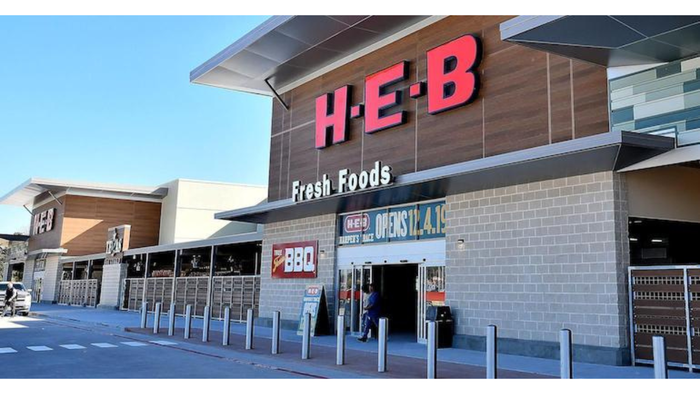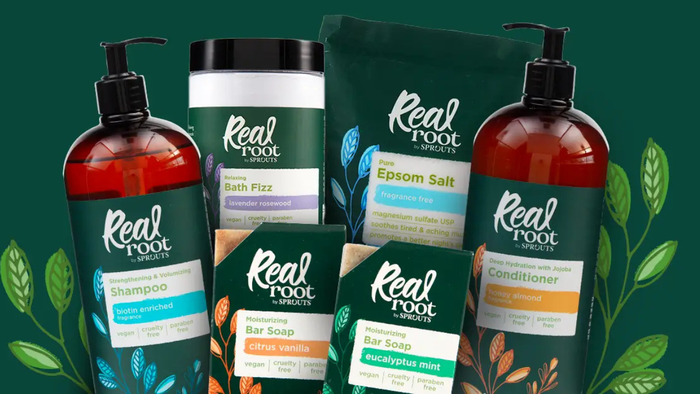Toasting summer
January 1, 2018
Exciting new varietals, coupled with creative marketing and advertising programs, ensure that wine remains the year-round beverage of choice for many adult consumers. By Richard Turcsik More consumers are enjoying the lazy, hazy, crazy days of summer by popping the cork on a nice bottle of Chardonnay or Merlot. Historically, steamy summer days have gone hand-in-hand with cracking open an ice-cold beer on the back porch, but for many consumers wine is becoming the 365-day alcoholic beverage of choice and creative marketing and merchandising campaigns developed by leading wineries are drawing in scores more year-round drinkers. Figures from San Francisco-based Constellation Wines U.S. show that wine volume in the food/drug category in 2009 pretty much held steady throughout the year at about 5,000,000 cases per month, with a slight spike in November and December. “During the summer most retailers would not say that wine declines in dollars, but rather, beer just becomes so much bigger,” says Chris Fehrnstrom, chief marketing officer at Constellation. “Wine promotions become more white- and blush-wine focused, as lighter fresher wines sell better than reds during the summer months.” “With the weakened economy people have been eating out less, so there is an opportunity for wine in grocery because consumers still want to enjoy themselves, but they are looking for value and ways to save money,” says Gary A. Hemphill, managing director, information services, at New York-based Beverage Marketing Corp. “Domestic wines will continue to outpace category rates,” says Claudia Schubert, vice president of marketing for Napa, Calif.-based Diageo Chateau & Estate Wines. She adds that when it comes to imports, Argentina, New Zealand and Chile are all showing sales growth rates ahead of the category. A taste of the grape “As the consumer becomes more comfortable within our category, we are experiencing an increase in per capita consumption,” says Steve Sprinkle, vice president of domestic sales for E. & J. Gallo Winery, based in Modesto, Calif. “The key is to help the consumer become more comfortable with their wine shopping experience. This can be executed in several formats. Where legal, in-store tasting demos offer an excellent opportunity to create trial and build sales. Merchandising wine, either via the shelf, cold box, or cross-merchandising programs is also critical.” Gallo, for example, has partnered with Stubb’s BBQ sauce and marinades to promote its Dancing Bull brand; with Certified Angus Beef for its Louis M. Martini label; with Dove Chocolates for GFV Sonoma, McWilliam’s, Red Bicyclette, Mirassou and Dancing Bull labels; and Green & Black’s Organic chocolate with Frei Brothers wines. Other wineries also find it fruitful to cross-merchandise with other store departments, where allowed by law, of course. “When it comes to cross-merchandising, we are always looking for grocery partners,” says Mike Haering, brand manager for Hopland, Calif.-based Fetzer Vineyards, a subsidiary of Brown-Forman Corp., based in Louisville, Ky. “At summer grilling time that can be charcoal or meats and around the holidays it can be cheese and crackers. We always have those kinds of programs going on. Consumers really look for those kinds of promotions.” Follow Bobby Flay Columbia Crest, a label of Woodinville, Wash.-based Ste. Michelle Wine Estates, has found success teaming up with celebrity chef Bobby Flay. With the partnership now in its third year, Columbia Crest has now created an app that allows consumers to download food and wine recommendations by Bobby Flay. “The whole concept is to create something that is interactive and we find that the younger of-age consumers are especially more interested in doing the online approach,” says Brett Scallan, vice president, marketing, domestic, at Ste. Michelle Wine Estates. “Bobby Flay’s star has been rising and he is now with Parade magazine and the CBS Morning News , which has been good for us,” Scallan says. “He lends himself really well to wine and food people and our research shows that working with the Food Network and their demographics bring a nice overlap with our target customers.” Flay sometimes suggests an appropriate Ste. Michelle-affiliated wine to go along with some of the dishes he prepares on TV, Scallan says. Back to nature Fetzer officials find many consumers are looking for promotions that tout environmental responsibility. “Our research shows 95% of consumers do think green and two-thirds will actually buy a green product if it is a tie breaker and some 60% actively pursue green or sustainable products. That can be from the packaging of the product to what is inside the bottle, like our organic Bonterra Vineyards wine,” Haering says. “In our ad campaigns our focus with Fetzer has been on conservancies for sustainable management, like the American Hiking Society and Rails to Trails and we advertise in their publications, on their websites, etc.,” Haering adds. With its Barefoot label, Gallo is integrating the Beach Rescue Project, Surfrider Foundation, Barefooter beach clean-ups and www.barefootbeachrescue.com awareness via Quick Response (QR) codes on point-of-sale and social media in June. “QR is a unique bar code that lets customers instantly learn more about a product by visiting a mobile version of the product web site, ad or even a coupon on any supported smart phone,” Sprinkle explains. “This will be the first time that we will execute QR codes onto our point-of-sale material in-store.” Ste. Michelle offers an organic wine under its Snoqualmie label under the sub-brand called Naked. “People respond to the organic wine,” Scallan says. “Our winemaker is focused on creating wines that can compete with traditionally produced wines and in a blind taste testing we could compete against a slew of competitors who are not organic.” Turner, Ore.-based Willamette Valley Vineyards also has been touting its environmental sustainability. “Our mission in growing cool-climate varietals is to create elegant, classic Oregon wines from the Willamette Valley Appellation,” says Jim Bernau, founder and president. “As native Oregonians, we treasure our environment and use sustainable practices in growing and vinifying our wine grapes. Our largest focus is on producing world-class Oregon Pinot Noir and Willamette Valley Vineyards has been recognized as ‘One of America’s great Pinot Noir producers’ by Wine Enthusiast magazine.” Ste. Michelle is introducing several new products this year, including Two Vines Pinot Grigio in 750 ml and 1.5 liter sizes, as well as Harvest Select Riesling under the Chateau Ste. Michelle label. Bottles now feature a “Sweetness Meter” scale on the back to educate consumers about the differences between dry and sweet. “Riesling is certainly one of the most popular varietals in the category and being in the leadership position we want to take an innovative approach to introduce people to it,” Scallan says. Stand-out packaging Click Wine Group, a Seattle-based importer and marketer of popular-priced wines including Fat Bastard, Spanish Sons and Root: 1, has been working to update its packaging. “Packaging plays a critical role,” says president Peter Click. “In a sea of wines in the retail environment you have a split second to get the consumer’s attention and try to give them a message that has some resonance. We don’t do that by brightly colored packages or crazy animal labels. We have brands with real stories, people and vineyards behind them.” Willamette Valley Vineyards finds touting its numerous gold medals on its label helps its bottles stand out on the shelf. “High-level awards and ratings cause a substantial uptick in sales, especially when utilized immediately upon release of the award,” says Bernau. “We find we get two-to-three times the pull rate when a complimentary review or award is featured on retail shelf talkers.”
About the Author
You May Also Like



.png?width=700&auto=webp&quality=80&disable=upscale)
